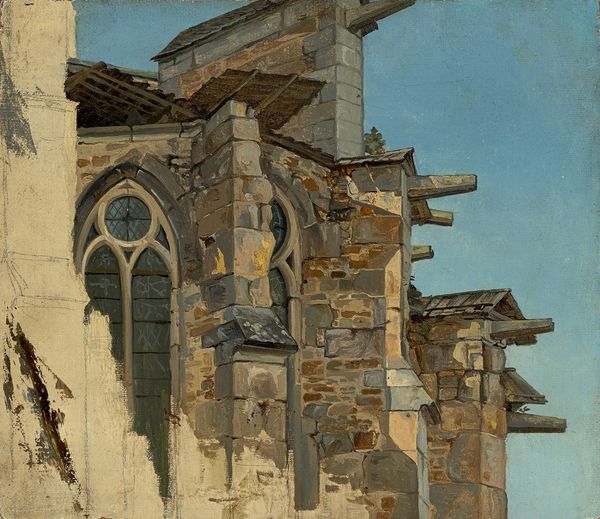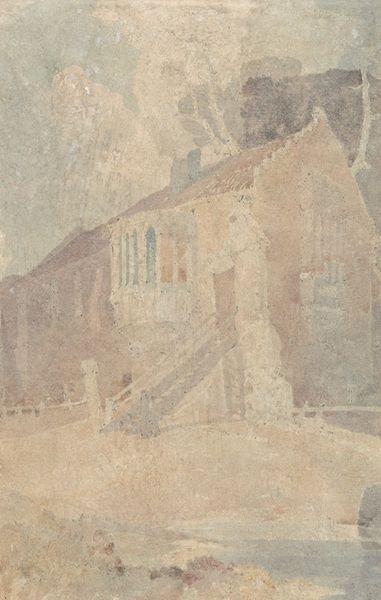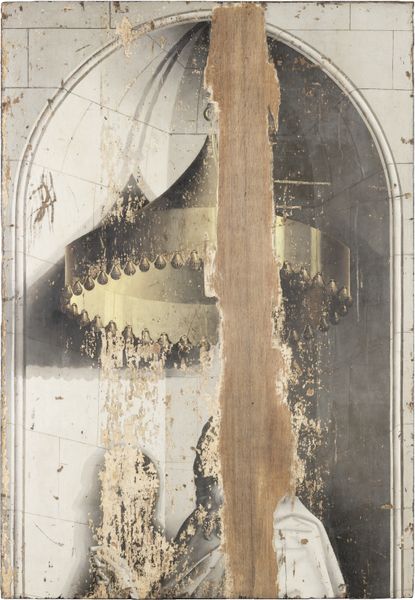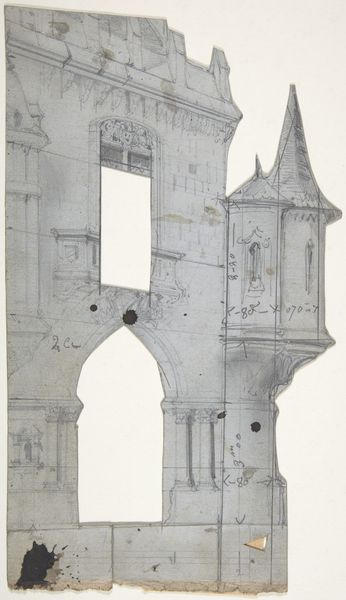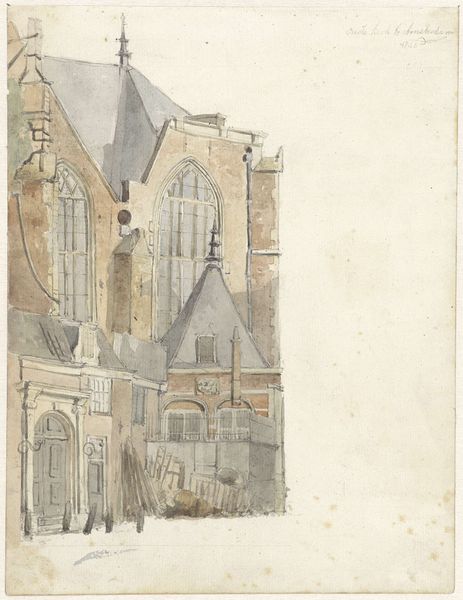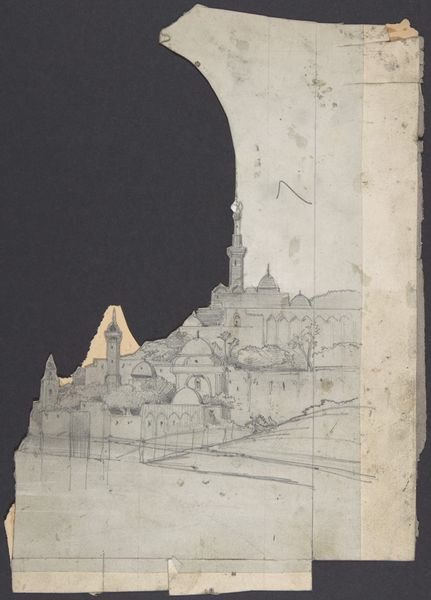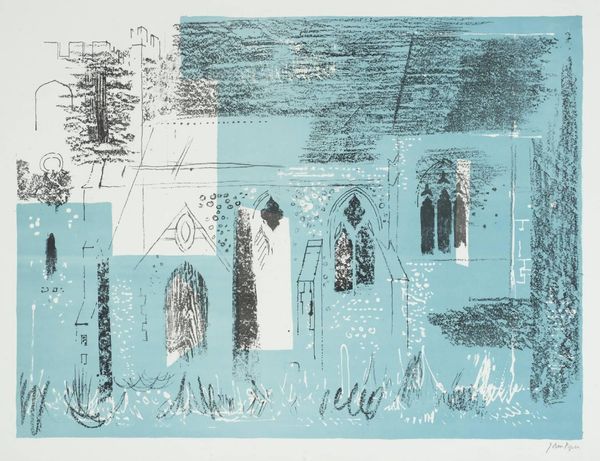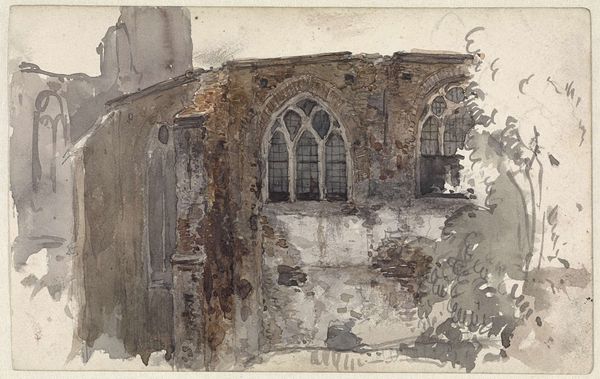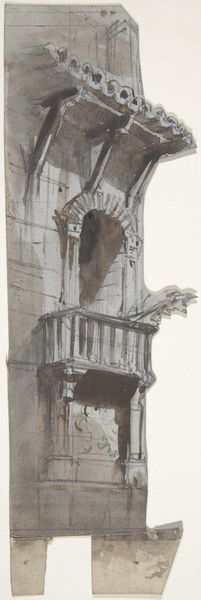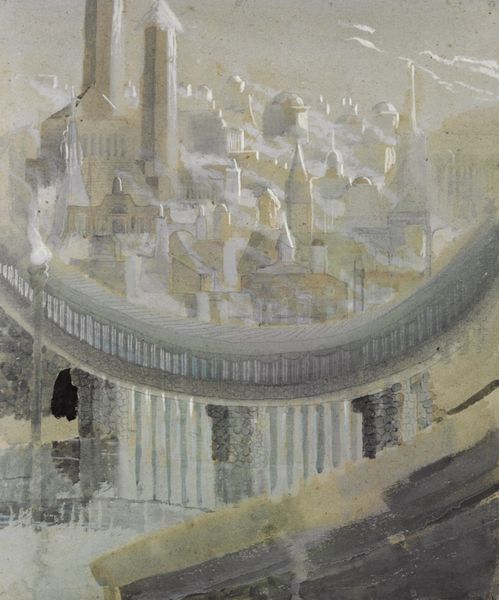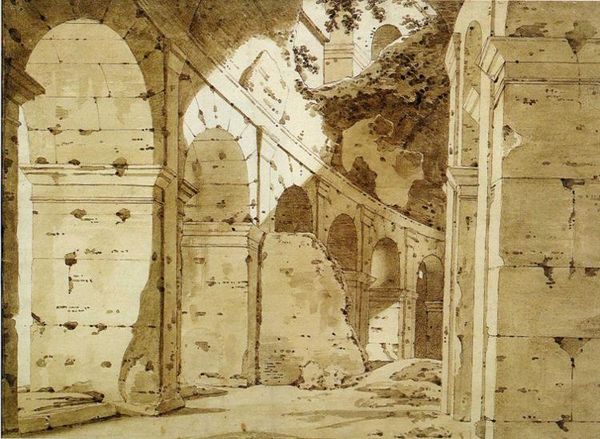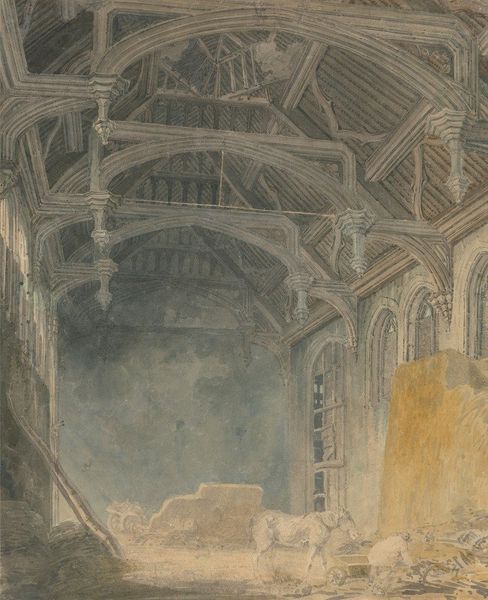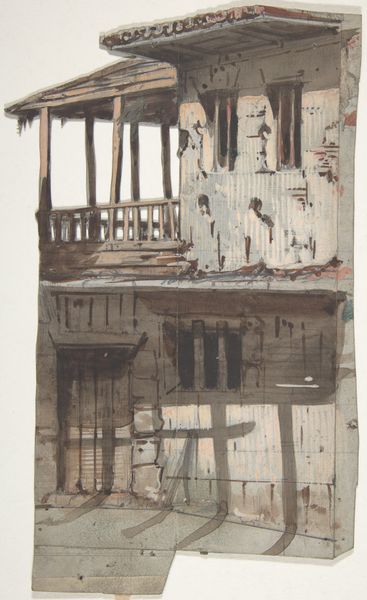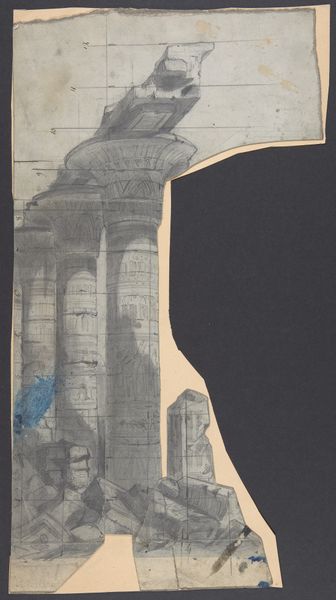
Dimensions: support: 571 x 381 mm frame: 735 x 550 x 70 mm
Copyright: CC-BY-NC-ND 4.0 DEED, Photo: Tate
Curator: John Armstrong gives us "Coggeshall Church, Essex." Look at the stark geometry amid such evident ruin. Editor: There's a quiet defiance here. Despite the visible decay, the structural bones are laid bare, almost celebrated. Curator: Indeed. Consider the social context – the era of post-war reconstruction in Britain. Was Armstrong reflecting the state of the nation, building upon the rubble? Editor: Or perhaps drawing attention to the labor involved in even maintaining such a structure? The exposed wooden beams are almost sculptural in their own right. Curator: And notice the palette, the near-monochrome evokes a sense of timelessness and speaks to the enduring quality of craftsmanship. Editor: The church becomes a monument to human endeavor, even in disrepair. It is a poignant reminder of resilience. Curator: Precisely. Thank you for illuminating the intersection between material and meaning. Editor: A pleasure. It is always good to revisit what has been made with what remains.
Comments
tate 7 months ago
⋮
http://www.tate.org.uk/art/artworks/armstrong-coggeshall-church-essex-n05675
Join the conversation
Join millions of artists and users on Artera today and experience the ultimate creative platform.
tate 7 months ago
⋮
This painting records the peculiar damage inflicted on a church in the village of Coggeshall in Essex, near the artist’s home. It recalls, however, images John Armstrong made in the 1930s in which ruined buildings served as symbols for political violence such as the Spanish Civil War. This was made as part of the artist’s work as an official war artist and it may be that the structure of the building that is revealed intact beneath the stonework is a symbol of resilience at a time of threat. Gallery label, May 2007
